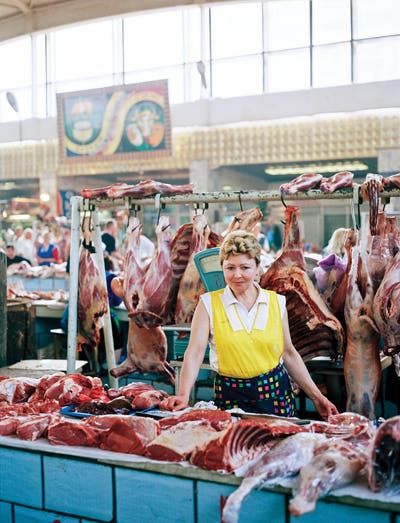
After the Thaw
On the face of it, there's nothing out of the ordinary about this picture, of the Cheryomushkinskiy market in Moscow: freshly butchered whole animals hang on hooks, while a wide variety of smaller, ready-to-cook cuts have been put on display atop a tile counter. But to me it is a happy reminder of how profoundly food shopping has changed in Russia since I first lived there, in the early 1990s, not long after the fall of the Soviet Union. Back then, food purveyors had not yet shaken off the legacy of the communist economy. Even though fewer and fewer grocery stores were state-run, shops in many cities still offered a paltry selection of canned and pickled foods, and the open-air markets—the only source for meat and produce in some places—weren't much better. Meat was carved away from the carcass in inconvenient hunks, and stacks of fish were frozen inside suitcase-size blocks of ice, which the vendor smashed on the floor to break up into salable pieces. Today, Moscow and other big Russian cities boast not only glitzy supermarkets stocked with a full range of fresh and packaged foods but also thriving farmers' markets filled with fruits and vegetables grown by farmers who now have an incentive to bring great food to market. —Sharon Hudgins, author of _The Other Side of Russia (TAMU Press, 2004)_
Keep Reading
Continue to Next Story










